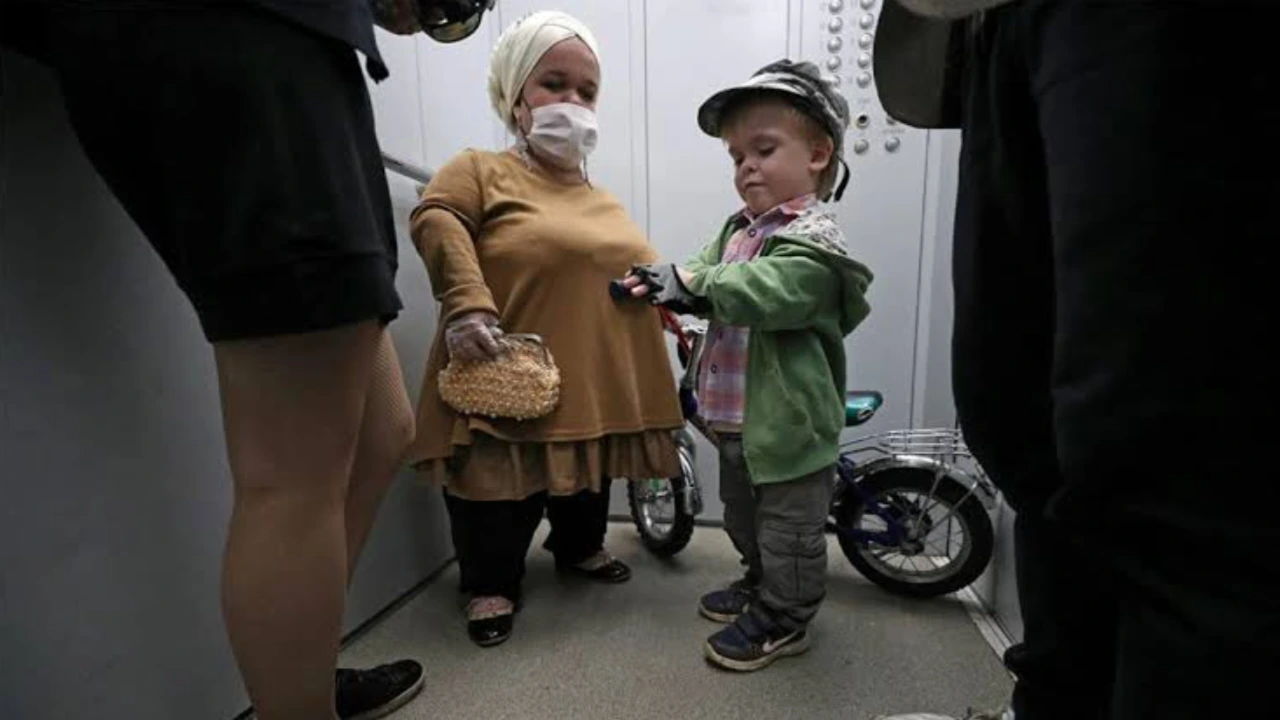Achondroplasia is a bone growth disorder characterized by dwarfism and disproportionate limb size. This condition is one of the most common types of bone growth disorders.
Achondroplasia is characterized by short arms and legs, causing the sufferer to have a dwarf body (dwarfism). Achondroplasia is a rare abnormality that only occurs in 1 in 15,000-40,000 births in the world.
The average height of adult achondroplasia patients is 131 cm in men and 124 cm in women. Despite having different physical conditions, achondroplasia sufferers have a normal level of intelligence like normal people in general.
Causes of Achondroplasia
Achondroplasia is caused by a genetic mutation in the FGFR3 gene, which is the gene that produces the protein Fibroblast Growth Factor Receptor 3. This protein plays an important role in the process of ossification or the process of turning cartilage into hard bone.
Mutations in the FGFR3 gene cause the protein to not function properly and interfere with the transformation of cartilage into hard bone. As a result, the bones grow shorter with an abnormal shape, especially the bones in the arms and legs.
Mutation of the FGFR3 gene in patients with achondroplasia can occur in two ways, namely:
Spontaneous mutations
Most cases of achondroplasia are caused by gene mutations that are not passed down from parents. This mutation occurs spontaneously and the cause is not yet known.
Inherited mutations
About 20% of achondroplasia cases are inherited from parents. If one of the parents suffers from achondroplasia, the percentage of children suffering from a similar condition can be as high as 50%. However, if both parents suffer from achondroplasia, the risk of the child also suffering from this condition is as follows:
- 25% chance of a normal sized child
- 50% chance of a child having a defective gene that causes achondroplasia
- 25% chance of a child inheriting two defective genes causing fatal achondroplasia ( homozygous achondroplasia a )
Symptoms of Achondroplasia
From birth, babies with achondroplasia can be recognized through their physical characteristics, such as:
- A short stature that is far below the average height of a child of his age
- Short arm, leg, and finger measurements
- The size of the head is larger, with a prominent forehead
- Misaligned and crowded teeth
- Abnormalities in the shape of the spine, either in the form of lordosis (curved forward) or kyphosis (curved backwards)
- Narrow spine
- The stem forms the letter O
- Short and wide soles
- Weak muscle strength
When should you go to the doctor?
If your family members have a history of achondroplasia, do a genetic test before planning a pregnancy. The purpose is to find out how big the risk of this abnormality is passed on to the fetus.
If you or your child is diagnosed with achondroplasia, it is recommended to undergo routine check-ups with the doctor to prevent complications. It should be noted that the risk of achondroplasia complications can increase over time so early treatment is expected to prevent the worsening of symptoms.
If your family members have a history of achondroplasia, do a genetic test before planning a pregnancy. The purpose is to find out how big the risk of this abnormality is passed on to the fetus.
If you or your child is diagnosed with achondroplasia, it is recommended to undergo routine check-ups with the doctor to prevent complications. It should be noted that the risk of achondroplasia complications can increase over time so early treatment is expected to prevent the worsening of symptoms.
Diagnosis of Achondroplasia
Achondroplasia can be diagnosed during pregnancy or when a new baby is born. Here is a complete explanation:
After the baby is born
As an initial step, the doctor will examine the patient’s physical symptoms and ask and answer questions with the parents regarding the family’s health history. Achondroplasia can usually be recognized by the characteristic short and disproportionate limbs, which can be measured through a thorough physical examination.
To confirm the diagnosis, the doctor can also perform further examinations with a DNA test. This test is done by taking a DNA sample from the blood to then be examined in the laboratory. The DNA sample was used to detect possible abnormalities in the FGFR3 gene.
During pregnancy
Achondroplasia diagnosis can also be done during pregnancy, especially for parents who suffer from achondroplasia. Some tests that can be done to detect achondroplasia are:
- Uterine ultrasound
Uterine ultrasound is used to check the condition of the fetus in the womb and detect signs of achondroplasia, such as a larger than normal head size. USG can be done through the mother’s stomach (transabdominal) or through the vagina ( transvaginal USG ). - Detection of FGFR3 gene mutations
Detection of gene mutations while still in the womb can be done by examining amniocentesis samples or placental tissue samples, called chorionic villus sampling . However, this action risks causing a miscarriage.
Treatment of Achondroplasia
Until now, there is no method to treat achondroplasia completely. The existing treatment is limited to relieving symptoms or preventing and treating complications that appear. The handling method includes:
1. Medical check up
Routine medical check up aims to monitor the growth of the patient’s body. This examination covers the measurement of the upper to lower body ratio. The doctor will also continue to monitor the patient’s weight to prevent obesity.
2. Hormone therapy
In children with achondroplasia, doctors will recommend hormone therapy routinely. The purpose is to increase the growth of the child’s bones so that he can have a better body posture as an adult.
3. Dental care
Dental treatment aims to improve the stacked tooth structure experienced by achondroplasia sufferers.
4. Antibiotics
Antibiotics can be used to treat ear infections that are often experienced by patients with achondroplasia.
5. Anti-inflammatory drugs
Anti-inflammatory drugs can be given to treat patients with achondroplasia who also experience joint disorders.
6. Operation
Surgery can be performed to relieve symptoms or overcome complications that occur. Operations that can be performed include:
- Orthopedic procedures
Orthopedics are performed by doctors to improve the shape of the legs O . - Lumbar laminectomy
Lumbar laminectomy is performed to overcome spinal stenosis . - Ventriculoperitoneal shunt
This operation is performed if the patient has hydrocephalus . This procedure is performed by inserting a flexible tube (catheter) to remove excess fluid in the brain cavity. - Cesarean section
Pregnant women with achondroplasia have small pelvic bones so it is recommended to give birth by cesarean section . A caesarean section should also be performed when the fetus is diagnosed with achondroplasia, in order to reduce the risk of bleeding due to the fetal head being too large for normal delivery. - Tonsillectomy and adenoidectomy
Doctors can perform tonsil removal (tonsillectomy) and adenoid gland removal (adenoidectomy). This is because achondroplasia sufferers can experience abnormalities in the shape of the middle part of the facial bones, so there is a risk of swelling of the tonsils and adenoid glands.
Complications of Achondroplasia
There are various complications that can be experienced by achondroplasia sufferers, including:
- Overweight and obesity
- Repeated ear infections, due to narrowing of the ear canal
- Limitations in moving, due to deformities of the arms and legs
- Spinal stenosis , which is a narrowing of the spinal column that causes the nerves in the spinal cord to be depressed
- Hydrocephalus, which is the accumulation of fluid in the cavity (ventricle) in the brain
- Sleep apnea , which is the condition where the rhythm of breathing stops during sleep
Prevention of Achondroplasia
Until now, it is not known exactly how to prevent achondroplasia. However, if you suffer from achondroplasia or have a family history of achondroplasia, it is recommended to consult a doctor to find out more about the risk of decreasing achondroplasia to children.
References :
Bhusal, S., et al. (2020). Diagnosis of Achondroplasia at Birth: A Case Report. JNMA: Journal of the Nepal Medical Association, 58(222), pp. 119–21.Hoover-Fong, J., et al. (2020). Health Supervision for People with Achondroplasia. Pediatrics, 145(6), pp. 1–19.Pauli, R. (2019). Achondroplasia: A Comprehensive Clinical Review. Orphanet Journal of Rare Diseases, 14(1), pp. 1–49.National Institute of Health (2021). MedlinePlus. Achondroplasia.Patient (2019). Congenital and Inherited Disorders. Achondroplasia.Kids Health (2022). Parents. Achondroplasia.National Organization for Rare Disorders (2021). Rare Disease Information. Achondroplasia.Johns Hopkins Medicine (2021). Conditions and Diseases. Achondroplasia.Stanford Children's Health (2021). Achondroplasia in Children.Cedars Sinai (2021). Health Library. Achondroplasia in Children.Cleveland Clinic (2021). Diseases & Conditions. Achondroplasia.Kivi, R. Healthline (2022). Achondroplasia.Parikh, S. Medscape (2022). Achondroplasia.Stöppler, M. MedicineNet (2018). Achondroplasia.

